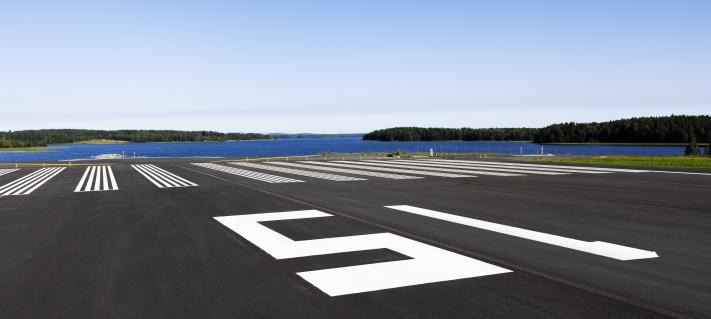Airport runways have to be renovated approximately every 10–15 years so that they remain operational throughout the year. The need for renovations varies depending on the airport. It is influenced, for example, by traffic volumes, weather conditions, and the number and size of the aircraft that use the airport. On average, Finavia carries out one or two renovations of runways each year.
– We want to keep our service levels high and ensure safe and smooth traffic at all of our airports throughout the year. We regularly monitor the condition of the infrastructure with measurements and visual monitoring so that we can prepare for necessary reparations, says Henri Hansson, Director of Technology, Responsibility and Safety at Finavia.
Most renovations are scheduled for the summer, when the weather conditions are good and the disturbances are minor. This summer, extensive renovations will be carried out at Savonlinna Airport, where the uppermost surface layer of the runway will be replaced. At the same time, extensive electrical work will be carried out at the airport. The airport will be closed to traffic in May and June due to the renovations.
Renovations result in lower emissions
Usually, an airport has to be closed for approximately a month when its runways are being repaired. At the same time, other important infrastructure will also be renovated to minimise disruption to the airport's operations. Such infrastructure includes the airport's navigation system, electricity network and lighting.
As a result of the renovations, Finavia aims to reduce the environmental impacts of its operations.
– We have, for example, invested tens of millions of euros in the de-icing areas around runways and on the apron. In connection with the renovation work, our aim is also to improve the management of storm water in order to minimise water damage, says Hansson.
All Finavia airports are carbon neutral, but improvements in infrastructure also aim to affect air traffic emissions.
– With an efficient infrastructure in place, we can significantly reduce air traffic emissions. For example, when the de-icing and anti-icing processes are efficient, aircraft can take off and land more smoothly, resulting in shorter taxiing times.
From the point of view of energy consumption, it is essential that the hundreds of lights on the runways are as energy efficient as possible. Therefore, one of the aims of the renovation is to replace all old halogen-based runway lights with LED lamps, with an energy consumption of only about 30% compared to halogen lamps.
The emissions from renovations will be reduced by reusing materials whenever possible. For example, a used runway surface can often be used for service roads and for mixing new asphalt mass.
Local stakeholders involved in scheduling renovations
In order to minimise the temporary disadvantages caused by the closure of the airport, Finavia maintains close contact with local stakeholders. Discussions are mainly taking place with the city management, various airlines and general aviators.
– We discuss timetables with our stakeholders. The renovations will be adapted to major events taking place in the area, so that the renovation work would cause as little inconvenience to the economic life and residents as possible. For example, the renovation of Savonlinna Airport has been scheduled so that it will be completed before the Opera Festival begins in July, says Jani Jolkkonen, Director of Finavia's Airport Network Business.
Residents and the business life in the area benefit directly from the renovations, thanks to the man-years and investments created by the renovation.
– Often, material deliveries and employees come directly from the areas around the airport. Renovations often employ dozens of people and produce even hundreds of man-years, says Hansson.



